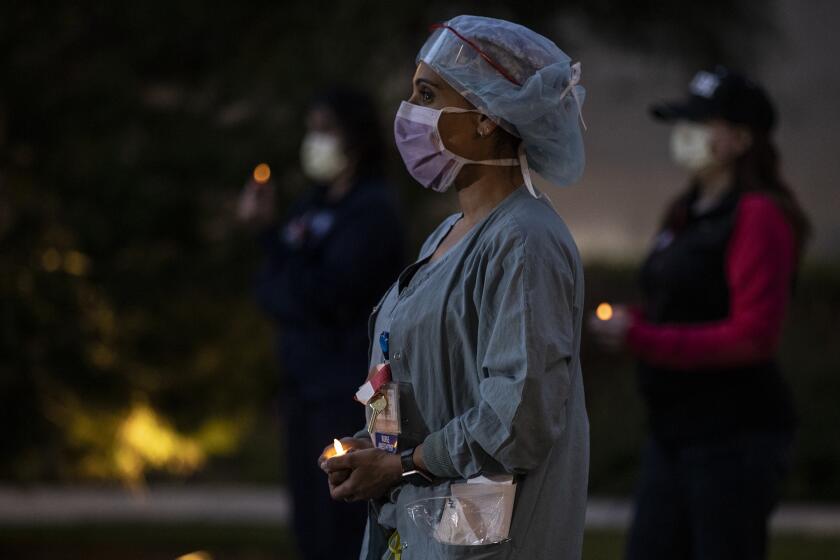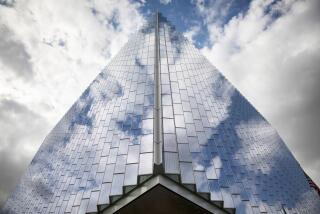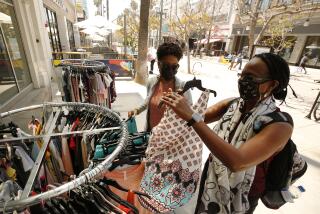Workers fear returning to work. Many are resisting the call
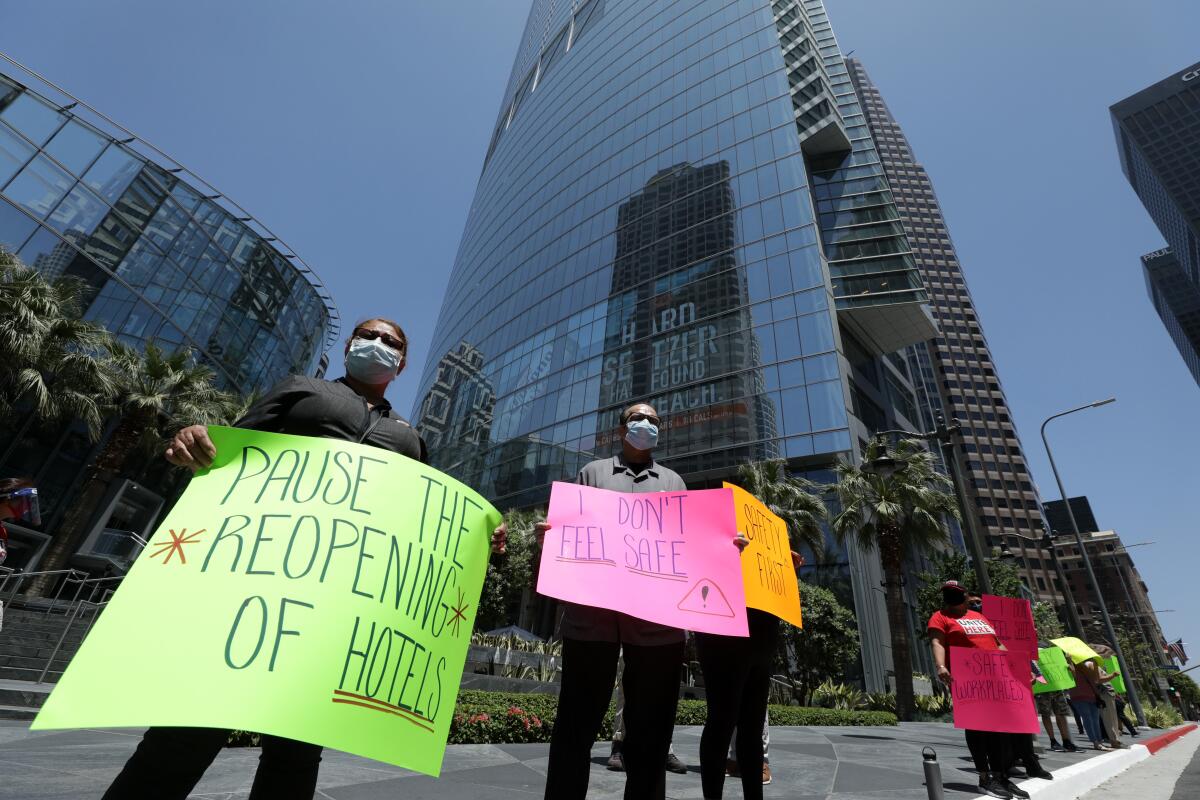
- Share via
A Santa Monica hotel housekeeper who works for minimum wage.
A downtown Los Angeles lawyer with a six-figure salary.
A Disneyland parking attendant who supports four sons.
A rural schoolteacher in Northern California whose husband has lung disease.
What they have in common: fear.
Also anger, confusion and frustration with California’s roller-coaster coronavirus economy — in which workplaces close and open and close again, rules for those that remain open can change by the day, and enforcement often seems lax.
Amid soaring infections and hospitalizations, Gov. Gavin Newsom this month again shut down a large swath of businesses across the state, including dine-in restaurants, bars, movie theaters, card rooms, gyms, hair salons and some offices.
Nonetheless, thousands of employees who have been furloughed or able to work from home since March are being called back to physical workplaces.
Many, especially those backed by powerful labor unions, are resisting. They cite the failure of employers over the last four months to prevent COVID-19 outbreaks, even in hospitals, nursing homes, fast-food outlets, grocery stores and warehouses where workers were deemed “essential” by the state.
“Workers who never left the workplace were often not sufficiently protected,” said Laura Stock, director of the Labor Occupational Health Program at UC Berkeley. “Now a lot of people have been forced to go back to work in circumstances they don’t feel are safe.”
Harry Sentoso, 63, went back to work at Amazon as part of the company’s hiring wave. Two weeks later, he was dead from COVID-19.
Since March, more than 17,800 workplace complaints about COVID-19 have poured into the Los Angeles County Department of Public Health. California’s Division of Occupational Safety and Health, known as Cal/OSHA, had received some 3,800 complaints as of mid-July.
Businesses are often less than forthcoming with workers about whether they have been exposed to an infected colleague, Stock said, and jurisdiction between county health departments and Cal/OSHA, which has long been underfunded, is unclear.
Furloughed employees called back to the workplace usually lose unemployment benefits if they don’t return. “It’s a terrible situation,” Stock said. “People have to choose between a paycheck and their health — not only their own health, but the health of their family and their community.”
On a corner of Figueroa Street in downtown Los Angeles this month, dozens of masked housekeepers and dishwashers held a lunchtime rally, waving hand-lettered signs reading, “I don’t feel safe” and “Pause reopening of hotels.”
Unite Here Local 11, a union that represents about 25,000 hospitality workers in Southern California, has mounted protests ever since Los Angeles County allowed hotels to reopen to the general public June 12. Since March, hotels had been permitted to serve only first responders, essential workers in quarantine and some homeless people under a county program.
Blanca Guerrero, recently called back to her housekeeping job at the JW Marriott Santa Monica Le Merigot, said her bosses have not offered training on how to clean without risking exposure from other workers and guests.

Two weeks ago, a guest approached her without a face covering and coughed on her cleaning cart, but when she told her supervisors, she said, they did nothing. When a co-worker fell ill, she said, the hotel refused to pay for a COVID-19 test.
A Marriott spokeswoman declined to comment on Guerrero’s situation but said in a statement: “The well-being of our guests and associates is of paramount importance. Marriott has well-established cleaning processes and training in place.”
Despite what Guerrero, 48, called her “big fear” of catching COVID-19, she said, she can’t quit because her minimum-wage pay helps support her two daughters, ages 19 and 23.
Unite Here has filed a dozen complaints with the L.A. County health department, documenting 85 virus infections, said Kurt Petersen, co-president of Local 11. “We all want to go back to work, but I just don’t think we are ready yet,” he said, adding that despite installing plexiglass barriers and providing protective equipment, hotels are not hiring sufficient staff to ensure thorough cleaning.
A survey of Local 11 members in late June showed 75% didn’t want to be forced back to work before the pandemic had passed. The union has petitioned the L.A. County Board of Supervisors to pause the reopening of hotels for tourism and leisure travel until stricter safety protocols, worker training and contact tracing can be ensured.
With Los Angeles County’s unemployment rate at 19.5% in June, and probably rising as businesses shut again, discouraging tourism could prolong the already massive hit to the local economy. Before COVID-19 struck, 51 million tourists were expected in 2020. Now the forecast is for about 30 million visitors. The decline could mean an $11-billion drop in spending, according to the Los Angeles Tourism and Convention Board.
At the Clara Shortridge Foltz Criminal Justice Center a few blocks from where the hotel workers launched their protest, attorney William Hayes is classified as an essential worker — along with scores of other deputy public defenders. He has worked through the pandemic, connecting with jailed clients mainly via video since jury trials were suspended in March.
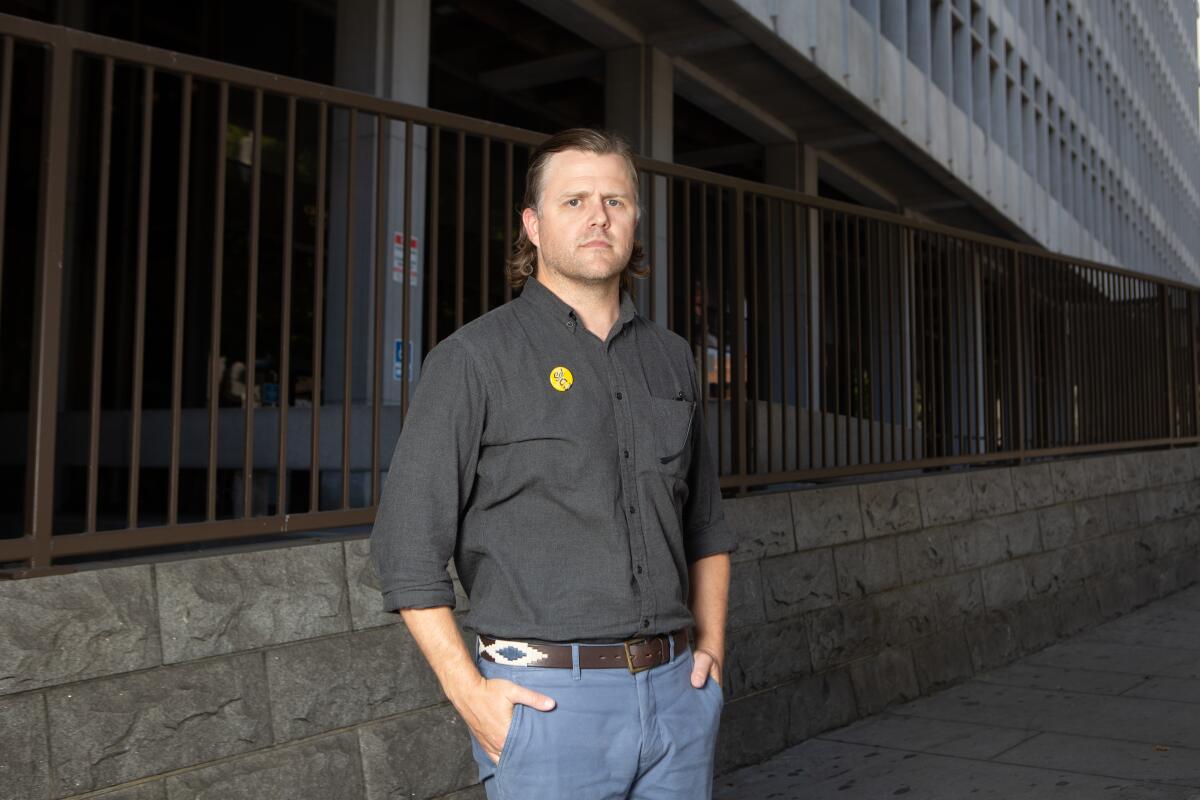
But on July 6, the hulking building reopened to the public. Crowds are now milling about as Hayes, 37, rides the elevators between his 19th-floor office and courtrooms on other floors. Jury trials are set to resume in August or September.
“People I work with are frightened,” he said. “It’s a kind of madness that we’re opening up just as hospitalizations and deaths are spiking.”
Testing in the jails “shows, like everywhere else, the virus is going up and up and up,” he said, even as hundreds of defendants are brought to court every day.
At the court, he said, “social distancing is not enforced. Seven or eight people jump into elevators. Members of the public and court personnel are either not wearing masks or wearing them under their chins, or hanging off one ear.”
While some judges are “militant” about face coverings, Hayes said, “there are still judges who do not wear masks on the bench.”
If Hayes were to stop coming to work, he said, he would not only forfeit his salary but also let down clients waiting for their day in court. “They’re exposed to a potential death sentence” via the coronavirus by lingering in jail, he said.
“My colleagues and I, some of them elderly, are willing to take the risk,” Hayes said. “But they’re asking way too much of us.”
A spokeswoman for the L.A. County Superior Court declined to directly address Hayes’ assertions about enforcement but said in an email that judges were directed in May to wear face coverings. And a July 6 order mandated facial coverage, social distancing and the use of hand sanitizer in all county courthouses.
“The court has complied with all state and county public health requirements,” she wrote. “The sheriff’s staff is tasked with enforcing the social distancing protocol.” High-traffic areas are cleaned at least twice a day while floors, benches, courtrooms and elevators have physical-distancing markings, she wrote.
Scores of workers across Southern California — including those at restaurants, grocery stores, call centers, aerospace firms, garment factories and cubicle-filled offices — have contacted The Times to describe unsafe workplaces. Mostly, they requested anonymity for fear of losing their jobs. Among the most severe outbreaks: More than 300 workers at garment manufacturer Los Angeles Apparel tested positive for the virus, and four have died.
Organized labor, which protects members from retaliation through collective bargaining, is leading public resistance to back-to-work initiatives and airing urgent demands for stricter safety measures.
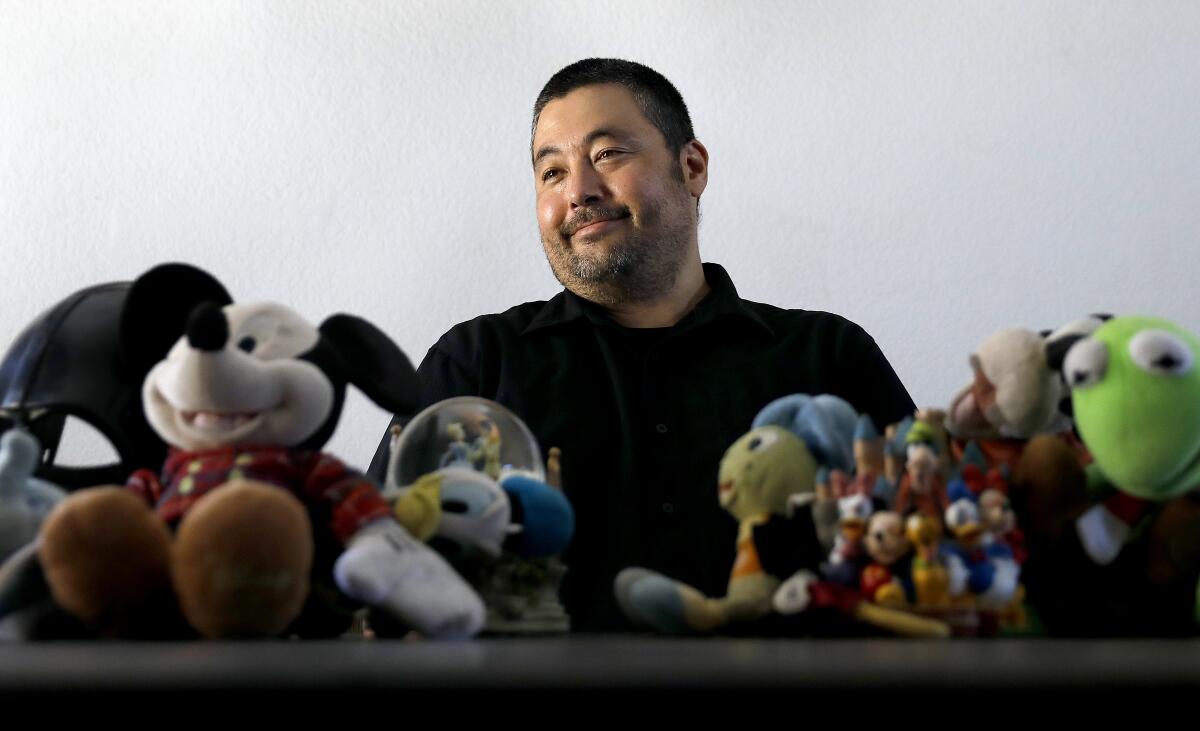
In mid-June, a dozen unions representing about 17,000 Disneyland Resort employees wrote to Newsom to say it would be unsafe to open the park as scheduled July 17. Less than a week after the letter was sent, amid a surge in Southern California coronavirus infections, Walt Disney Co. announced the park would not reopen this month. It has yet to set a new date.
The company was “overconfident and not realizing what it means to open a business where people could die,” said Austin Lynch, a union spokesman.
The COVID-19 pandemic is unleashing a wave of labor unrest harnessing front-line workers’ fear and anger across California and the nation.
Disney defends its reopening plan, citing enhanced cleaning, limits on capacity and the taking of guests’ temperatures at the park entrance. But the unions say a theme park with crowds and rides should not open until the virus is under control, because enforcing physical distancing and mask rules would be too difficult.
Joey Hamamoto, 23, a parking attendant at Disney’s Grand Californian Hotel, earned minimum wage plus tips before he was furloughed in March. If Disney doesn’t meet the union’s terms, he would be reluctant to return because “I won’t feel safe,” he said.
One of Hamamoto’s four sons has asthma, his brother recently contracted COVID-19, and his father had a stroke in May. He worries about bringing the virus home.
The valet break room is the size of a closet, Hamamoto said, and climbing in and out of multiple cars is risky: The World Health Organization recently acknowledged the coronavirus can linger in the air in enclosed spaces. ”We who work in the hotel are the first ones the guests see, people from all over the world,” he said. “There is no telling who can be carrying what.”
Public employee unions are equally emphatic. On July 10, United Teachers Los Angeles, which represents 32,000 teachers, counselors, nurses and librarians, issued the results of a poll of its members showing 83% opposed to reopening campuses.
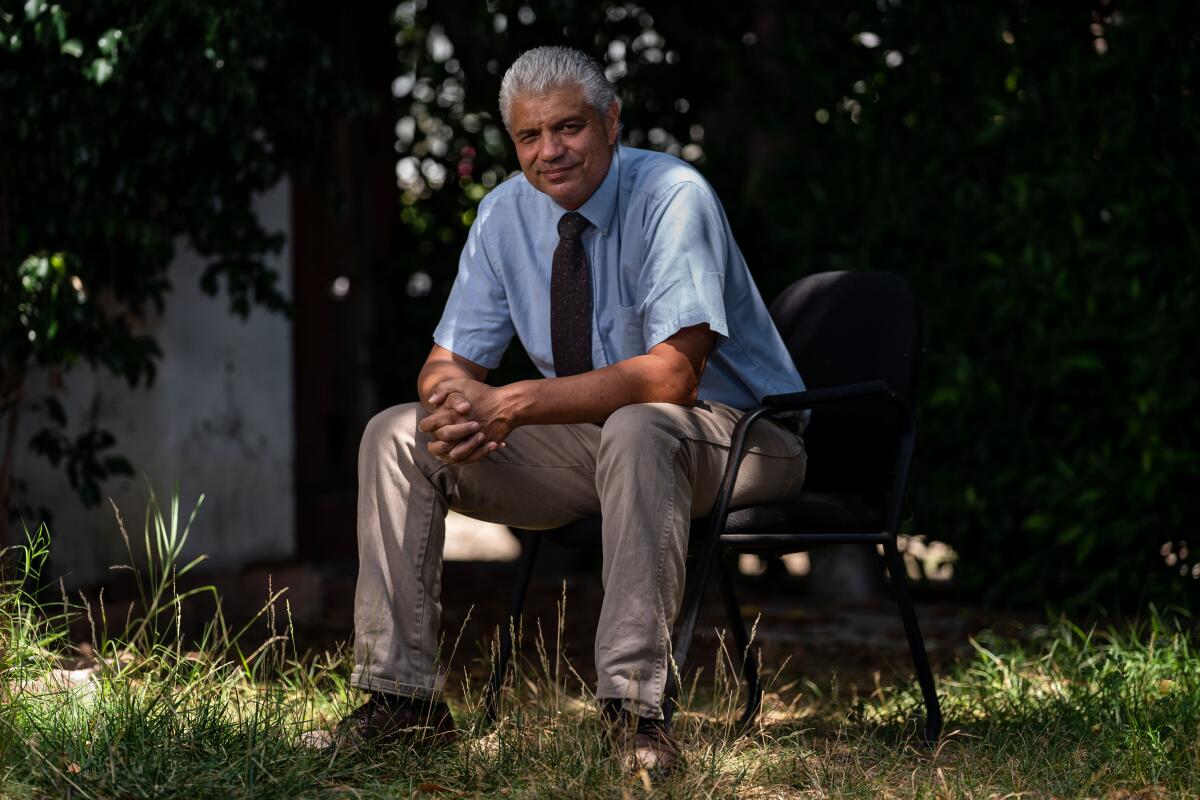
Three days later, amid a surge in COVID-19 cases, the L.A. school district announced it would not reopen for in-person classes until further notice. “You cannot tell a person your child [should] go to school to save this economy — and maybe your kid will die,” said Nick Harris, a middle school Spanish teacher.
On Friday, Newsom canceled in-person classes in 32 counties on the state’s COVID-19 watchlist. That was small comfort to Kristen Peckham, who teaches kindergarten in rural Trinity County, which is not on the list.
Peckham’s school, Burnt Ranch Elementary, will have to adhere to strict standards, including temperature tests, hand-washing and six feet of distancing. But students below third grade won’t be required to wear masks.
Peckham is 66, and her 85-year-old husband has lung disease.
Remote teaching has been a challenge, she acknowledges. Some students don’t have dependable access to the internet. And the kids are 5 and 6 years old, making independent learning near impossible.
Other teachers at her school used Zoom to livestream classes, but Peckham came up with other ways. She had recorded videos of lessons for her students’ parents to download when convenient, then made herself available to answer questions. She also sent packets of work for students to complete by hand, which yielded even better participation.
Peckham said she’s willing to keep doing that — but she isn’t willing to risk catching COVID-19 on the job and possibly infecting her husband.
She has told her principal she won’t return to a classroom. “I could not take the chance of being face to face with the kids.”
Peckham is not alone. Hundreds of thousands of California workers have underlying health conditions, such as diabetes and autoimmune diseases, that could aggravate a coronavirus infection.
Feldmar Watch Co., a retailer in L.A.’s Pico-Robertson neighborhood that sells thousand-dollar timepieces, has called back several staffers for appointment-only sales. Lorel Monroy, who has worked at the store for 14 years, was not among the volunteers.
Monroy, 50, has chronic asthma and feels suffocated when she puts on a mask.
“I don’t want to handle inventory and put it on a client’s wrist,” she said. “If I got infected, I probably wouldn’t survive on a ventilator.”
Moreover, with schools closed and her husband at his trucking job, she is reluctant to leave her 15-year-old son home alone. “He’s a responsible kid,” she said. “But teenagers can do crazy stuff.”
So far, Monroy’s boss is understanding. But if she gets called back and loses eligibility for unemployment benefits, she said, she probably would have to return or risk losing her South Los Angeles home to foreclosure.
The sinking state of the economy weighs on her, as furloughs at many companies turn into permanent layoffs. “It is scary to think I might be called back,” she said. “But if I don’t get called back, I’m more scared.”
More to Read
Inside the business of entertainment
The Wide Shot brings you news, analysis and insights on everything from streaming wars to production — and what it all means for the future.
You may occasionally receive promotional content from the Los Angeles Times.
